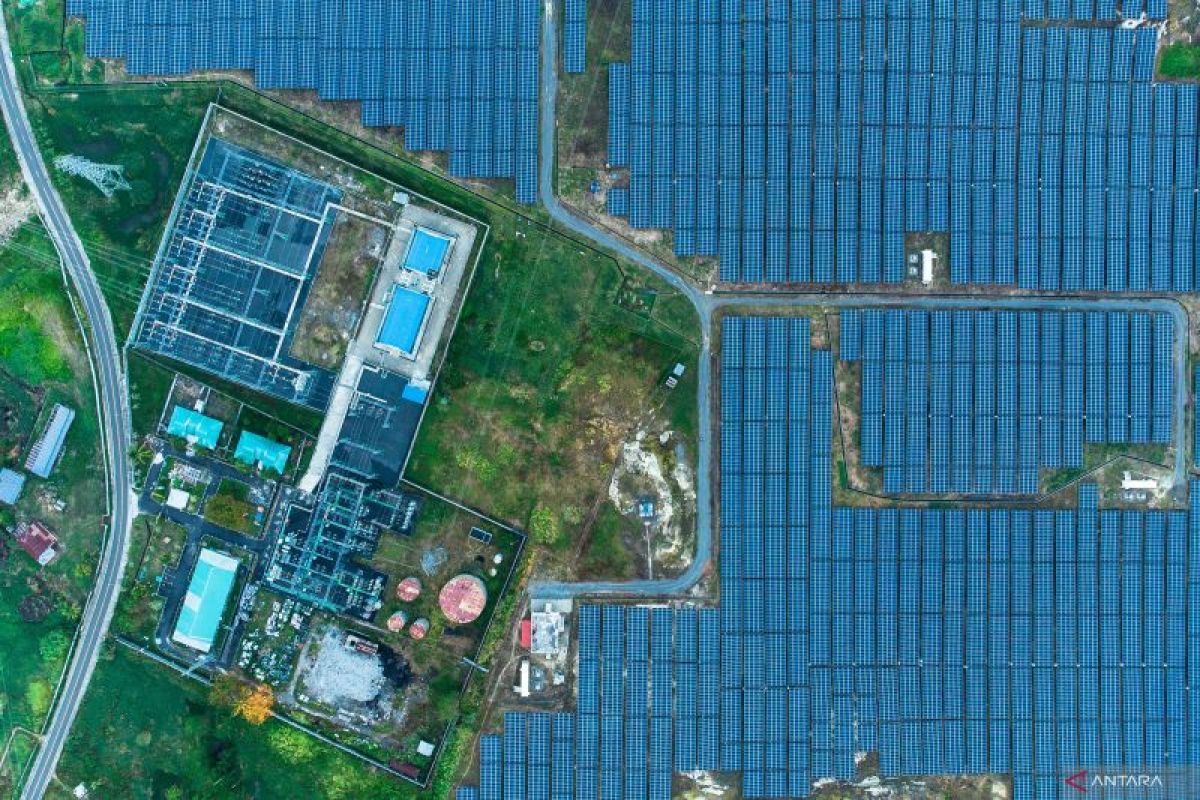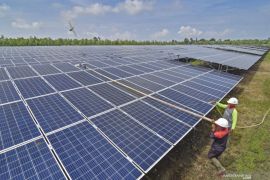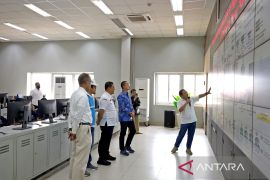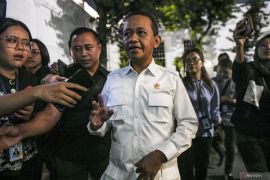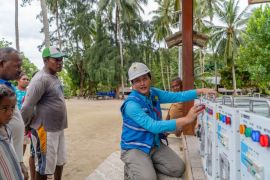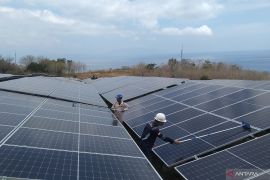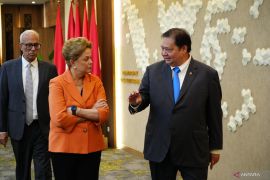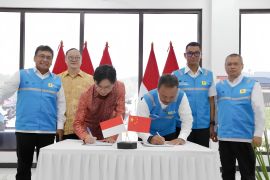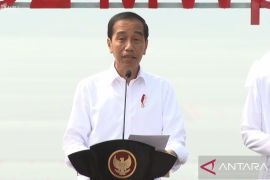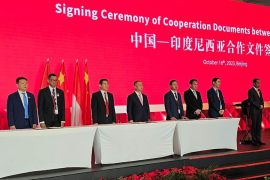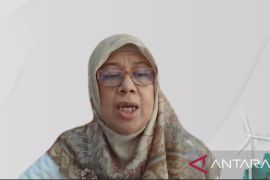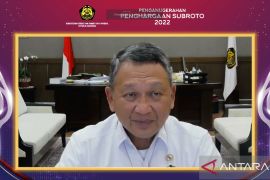Electricity and renewable energy system analyst from the Institute for Essential Services Reform (IESR), Alvin Sisdwinugraha, noted that NRE has several advantages in various aspects as compared to fossil energy.
From the aspect of environmental suitability, NRE is considered to be more pollution-free than fossil energy. Meanwhile from the reliability aspect, NRE is also more reliable since it can rely on any available local natural resources.
However, data from the Ministry of Energy and Mineral Resources (ESDM) shows that currently, Indonesia's primary energy mix is still dominated by fossil fuel. An expert staff for the ESDM Minister, Sripeni Inten Cahyani, noted that the primary energy mix from coal and petroleum in 2023 is reaching 74 percent, while the portion of NRE is around 12.3 percent.
NRE Potential
In fact, Indonesia has a large NRE potential, with a total of 3,687 gigawatts (GW). Energy Conservation Director of the ESDM Ministry, Gigih Udi Atmo, stated that this potential is spread throughout the country, with very diverse types of energy.
The first one is hydro potential, amounting to 95 GW, spread across Indonesia, especially in North Kalimantan, Aceh, West Sumatra, North Sumatra, and Papua.
This is followed by solar potential of 3,294 GW spread throughout Indonesia, especially in East Nusa Tenggara, West Kalimantan, and Riau.
Moreover, there is potential of 155 GW from wind speeds of more than six meters per second in East Nusa Tenggara, South Kalimantan, West Java, South Sulawesi, Aceh, and Papua.
Furthermore, marine energy potential of around 60 GW is also available in Indonesia, especially in Maluku, East Nusa Tenggara, West Nusa Tenggara, and Bali. Moreover, geothermal potential of 23 GW is spread across the Ring of Fire area that includes Sumatra, Java, Bali, Nusa Tenggara, Sulawesi, and Maluku.
Apart from that, bioenergy potential of 57 GW is spread throughout Indonesia in the form of forestry or plantation land waste and industrial waste. The types of potential include biofuel, biomass, and biogas.
With this enormous potential, the government is targeting a portion of NRE in the primary energy mix of 23 percent in 2025 and at least 31 percent in 2030, as stated in the General National Energy Plan (RUEN).
In fact, ESDM Minister Arifin Tasrif stated that the operation of coal-based steam power plants (PLTU) will be stopped in 2058.
“After 2030, PLTUs will no longer be developed. Additional generation after 2030 will come from NRE. The operation of the last PLTU will stop in 2058,” he emphasized.
However, efforts to realize energy transition from fossil fuel to NRE also come with some challenges. Currently, state-run electricity company, PT PLN, still has excess electricity capacity from fossil fuels, while at the same time, the company has to increase its NRE mix.
IESR Executive Director Fabby Tumiwa also did some calculations. According to Tumiwa, additional capacity from NRE of at least 3-4 GW or more is required every year to achieve the NRE target in the primary energy mix of 23 percent by 2025.
“Unfortunately, this excess capacity in fossil fuel has implications. If we add more generators but the demand is slow, it will worsen the excess capacity problem,” he pointed out.
Another challenge in realizing energy transition towards renewable energy is financing. Referring to the average tariff for electricity production, in which 70 percent of it comes from coal, the current cost of electricity production is around US$0.07-0.08 per KWh.
For this matter, NRE prices must be competitive that can be realized through low-interest funding.
If NRE prices are not competitive enough, this will increase electricity production costs. An increase in electricity production costs will then result in larger subsidies.
Strategy for realizing energy transition
A series of efforts have been pursued by the government along with PLN to realize energy transition towards renewable energy.
Atmo noted that the government has strengthened regulations, namely by issuing Presidential Regulation Number 112 of 2022 stating the highest benchmark price reference for the development of various NRE-based generators.
The government is also preparing a Draft of the NRE Bill and the final revision of the ESDM Ministerial Regulation to accelerate the development of rooftop solar power plants (PLTS), with energy potential reaching 32.5 GW.
Meanwhile, PLN has also switched its 1GW fossil-based power plants with PLTS.
The company has set a target for adding NRE-based generators, with a total capacity of up to 21 GW.
In July 2023, PLN agreed to 28 collaborations on the use of clean energy. Of the 28 collaborations, PLN is collaborating with 10 companies to provide rooftops PLTS, with a capacity of 187.97 megawatts (MW). PLN then agreed to a power purchase agreement (PPA) for the construction of PLTS, micro hydropower plants (PLTM), and waste power plants (PLTSa), with a total capacity of 25.7 MW.
PLN President Director Darmawan Prasojo stated in August 2023 that his side had also removed 13.3 GW of new PLTUs that were still in the planning phase in order to avoid greenhouse gas emissions followed by the cancellation of the purchase and sale agreement for 1.3 GW of electricity from the PLTU and replaced 800 MW of the PLTU with a gas generator.
In realizing energy transition, cooperation and participation from all stakeholders are needed, including the development of human resources. Moreover, the government, state-owned enterprises (SOEs), private sector, academics, society, associations, and the media should work together without taking sides.
If the government formulates policies, SOEs and the private sector must carry out biomass development business activities, then academics are needed to create innovations in NRE development that can be utilized directly.
Meanwhile, the community and associations, as government partners, play a role in providing assistance and positive campaigns for biomass development.
The media also plays an important role in educating the public regarding the importance of NRE and disseminating information on government programs to the public.
Related news: Natural gas key to energy transition: minister
Related news: Optimize NRE potential to expedite energy transition: Amin
Translator: Suci Nurhaliza, Resinta S
Editor: Azis Kurmala
Copyright © ANTARA 2023
